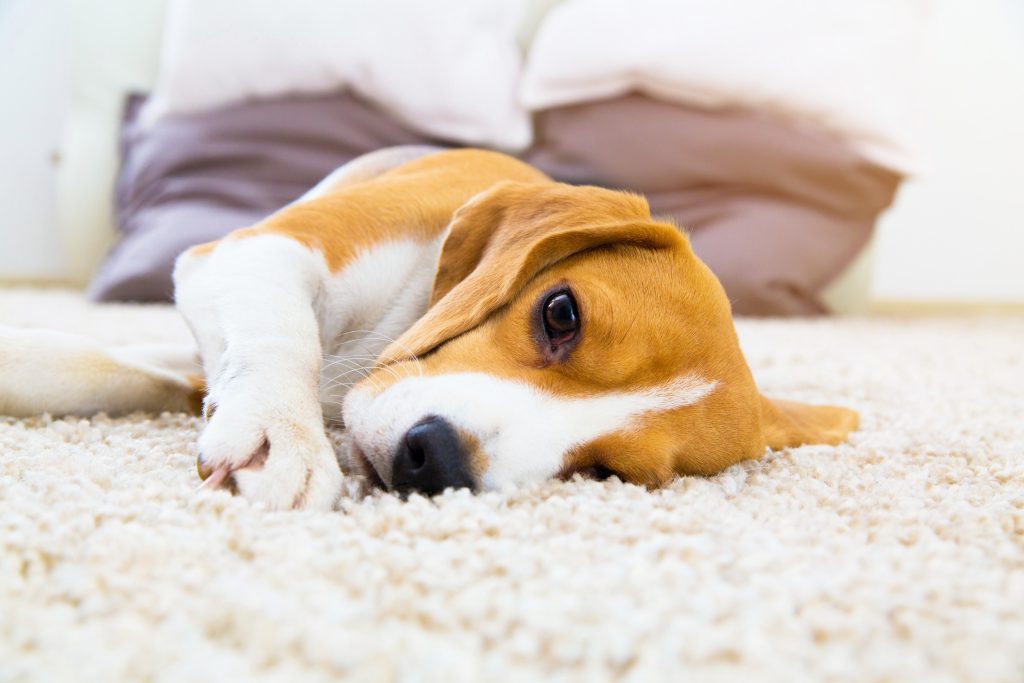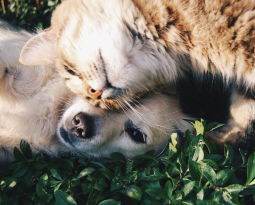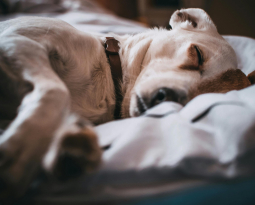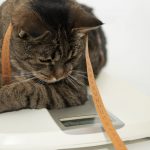Readers, as I write this piece I look over to my pet and she is snoozing blissfully under the table but her legs and face are anything but serene. She’s kicking and twitching, her eyebrows darting up and her lips twitching back. It’s almost scary to see, or it could be if I didn’t know better. If you’re worried about why your dog is twitching in their sleep, read on and find out just what’s running through their head!
Why Do Animals Twitch in Their Sleep?
Believe it or not, dogs aren’t the only animals twitching in their sleep. Just about every kind of animal studied exhibits this behavior, known as myoclonic twitches. These are any jerking or twitching of muscle groups that are not caused by underlying disease or dysfunction.
This muscle twitching is especially common in young puppies and older dogs. For puppies scientists think this may the brain and body working out the kinks, wiring the muscles to figure out ‘where does this limb go? How does it move?” type scenario. This is just a theory though.
Senior dogs are similarly more twitch prone than their younger adult dogs. A theory to answer this is that the part of the brain that paralyzes the larger muscle groups in sleep to prevent injury is working at a decreased capacity in older dogs, while puppies may be underdeveloped. Again, this is just a working theory. Sleep science is still new even in humans and animals are similarly just in the beginning stages. Whatever the reason, dogs of all ages twitch when they’re asleep, your pooch isn’t alone.
Many believe that these twitches are specifically related to dreams.
Do Dogs Dream?
In 2001 MIT did a study on laboratory rats and their sleep patterns, training them to run a maze and then measuring their brain activity at night when they entered REM sleep. Researchers were able to conclude (from incredibly accurate and precise data) that the rats were dreaming about running the maze. Thus scientists feel reasonably sure that rats are capable of dreaming. If rats can dream, and humans can dream, you know Ol’ Spot is dreaming. For many of us, we just always assumed this to be the case, but it’s nice to know the science backs it up.
While we don’t know exactly what dogs are dreaming about, based on the other studies it’s safe to assume that dogs have dreams related to their lives, chasing birds, barking at cats. The usual dog stuff.

Should I Wake My Dog Up?
Most of those myoclonic twitches seem to be associated with fun activities, hunting or chasing twigs. But sometimes you’ll notice your dog seems upset while they sleep. A whimper, or small cry coming from them. You don’t want your pet to be scared right? Well, hold that thought. Dreams occur in the deepest part of your sleep, during the REM cycle. Ever been woken up in the middle of sleep? You know how confused or sluggish you feel as you try to realign your waking self wth where your brain was certain you were a minute ago? It can take a minute to recalibrate. It’s the same for your dog! Waking them up in the middle of the a stressful dream might lead to an unexpected (and unintended!) bite as they scramble to understand where they are and what’s going on. The other thing is REM sleep is where the body gets its most restful slumber, having that interrupted can make your dog even more tired. So just let your pup ride out the dream and be there with a treat and some loving pats when they wake up!
So We’re Sure it’s Not a Seizure?
Twitches and sleep might be difficult to tell apart if you don’t know what to look for. Seizure movements are going to be more violent, and the limbs are going to be stiff as opposed to the standard dream kicks and paddling. If your dog is experience a seizure they may also eliminate during the episode. Don’t attempt to wake them during the seizure! When your dog wakes look for drooling, panting, or confusion. Talk to your vet right away if you think your dog is experiencing seizures when they are sleeping There can be a wide range of causes for seizures so its critical to get it diagnosed early.







